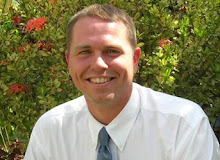We have all heard the joke about the 3 most important things to consider when purchasing real estate; location, location, location. I believe that principals will tell you something similar if you asked them about what they needed to do to be more effective in their role; communication, communication, communication. I am very happy to say that my ability to communicate has increased significantly since we introduced
google docs at ACS this year.
Although this may sound a little bit like an advertisement for Google, they have created a very powerful platform for educational communities. Here are a few of the ways that we have used these tools at ACS.
Gmail – this is a no brainer but it is amazing how much better our email systems now work. In the past, we relied on our parent community to submit their emails to us and we would place them in powerschool to create our email lists. This led to a couple problems:
- Many of our parents change jobs or emails and we didn’t always have the correct address on file
- Our email client we used previously had trouble communicating with various email agencies (eg. Hotmail) and many families never would get our correspondence
With the google domain, we were given enough email addresses to give each of our families their own. Our community knows that all of our letters, report cards, etc will be sent to this address and are checking it regularly or having these emails forwarded to their primary address. Our tech gurus at ACS have also created our email lists by linking this information to our powerschool database and our parent lists are automatically updated as students enroll or withdraw from our school.
Calendar – I have always been a big supporter of iCal, but the transition to google calendar was very easy. The calendar functions are great, and the ability to share calendars with my assistant and fellow teachers is wonderful. In addition, google calendar syncs with my mobile phone almost instantaneously so I can see where I am supposed to be wherever I am in the school.
Docs – We have a very collaborative culture at our school and I am increasingly hearing the phrase “lets put that on a google doc,” from teachers, students and parents. Our parents are very willing to help out at school events and we have been using google docs as a sign up list for various activities. Do you need parents to supply food for the MS dance? Let’s make a google doc. Want to run a parent book club and need to find out who would like a copy? Let’s make a google doc. These docs are easy to create and parents can access them with a simple click on the url link embedded in a mass email.
Forms – this might be my favorite. We have already used forms a few times and it allows us to collect information in spreadsheets very quickly. Basically, forms is a survey tool and can be used to send out short, focused surveys to various parent, student and teacher groups within the school. I have also used forms to send out a survey to a principals’ list serve that I belong to. One of forms greatest features is the ability to embed the survey in the body of your email. This makes it even easier for your respondents to participate and has allowed for more people within our community to have a voice.
Sites – As an international school we have some pretty tight guidelines about what information we post on our general website for anyone to access. At times over the past few years, I know that these restrictions have made it difficult for me to keep parents informed of important events or field trips that we have at our school. Our email problems of the past also meant that there were often parents who were in the dark about wonderful events that were taking place in our school. Google sites has allowed me to create a Parent Page, basically a website, where we are able to post very specific information about school events. The great thing about sites is that our parent page can only be accessed by people within our google domain. This allows us to keep this information private while giving parents access to the information that they need.
As you can tell, I am a big supporter of google docs and think that they have really helped me to engage our school community. I am looking forward to learning more about these tools and am sure that we will continue to discover new ways to use google at ACS.








